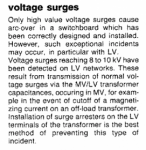sndbodkin
Member
- Location
- Blackfoot, Id
Our company was called to check a panel that had a short circuit between the buses. The panel is 277/480 3 phase 30 space with a 225 amp main breaker. No breakers were installed in the bottom 12 spaces of the panel. One of the buss pegs near the bottom of the panel on phase A, that a breaker would bolt to, was melted back and you could see where it had arced to phase C. On the bottom of the bus, each phase had been burnt or melted appearing that an arc had occurred between each of them. This happened once before on the same panel and again after the buses were replaced. Has anyone seen this before? I have been working as an industrial electrician over 30 years and never seen this happen. I would appreciate your input. Thank you





